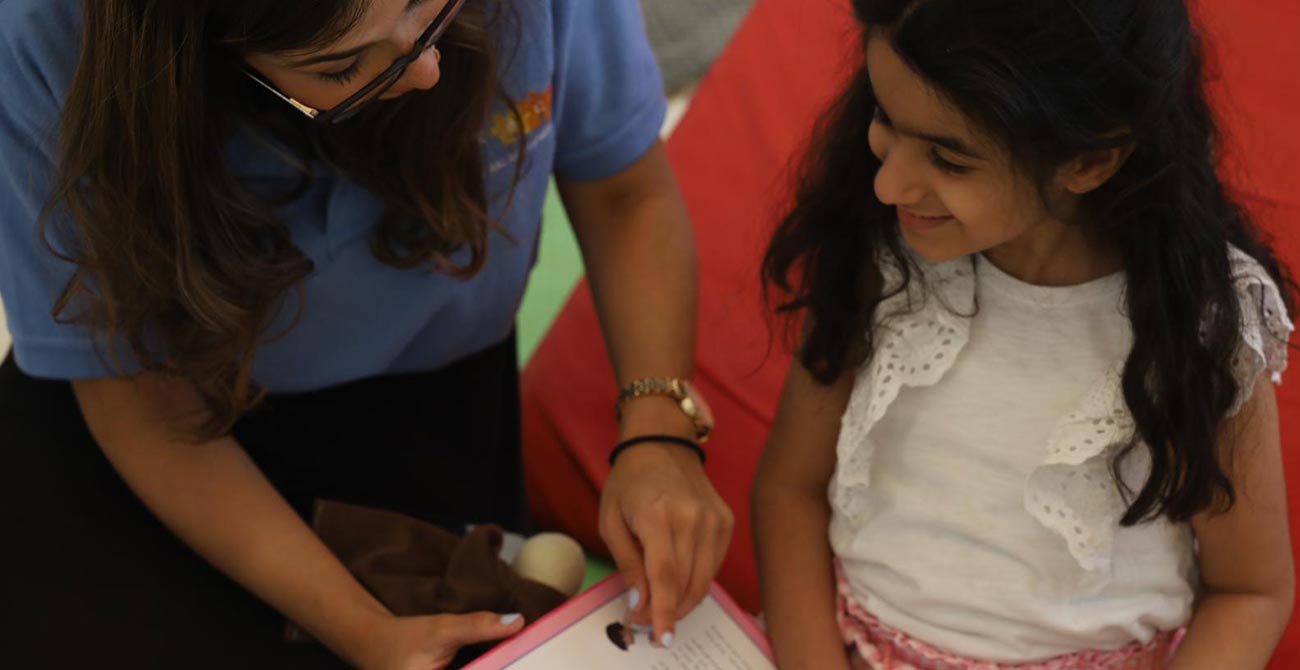
التدخلات المبكرة للتوحد: أفضل الأساليب
بواسطة: منى تادايونماجستير في إدارة الأعمال التجارية والمالية والإدارية والمحاسبية
الأطفال الأكثر استفادة من العلاج السلوكي العلاج الطبي العلاجي السلوكي لإدارة أعراض التوحد. يمكن للتدخلات غير الطبية للتوحد المبكر أن تدعم التدخلات الطبية
ماذا تفعل عندما لا يكون التدخل المبكر خياراً متاحاً؟
إن التدخلات المبكرة للتوحد هي أفضل طريقة لدعم التطور السلوكي والمعرفي والتواصلي والاجتماعي لطفلك عندما يتم تشخيصه بالتوحد.
وبفضل التقدم في معايير التشخيص، يمكن تشخيص معظم الأطفال المصابين بالتوحد بشكل موثوق في عمر السنتين تقريباً. وهذا يعني أنه يمكن أن يحصلوا على تدخل مبكر من معالجي تحليل السلوك التطبيقي (ABA)، الذين يستخدمون نهجاً قائماً على الأدلة لمساعدة الأطفال على إدارة أعراض التوحد حتى يتمكنوا من أن يكونوا مستقلين قدر الإمكان.
قد يحتاج بعض الأطفال المصابين بالتوحد أيضًا إلى علاج طبيعي أو علاج وظيفي أو علاج النطق أو علاج المهارات الاجتماعية أو غيرها من طرق العلاج الطبي. قد يحتاج البعض إلى أدوية موصوفة طبيًا للحالات المرتبطة بالتوحد، مثل زيادة خطر الإصابة بالنوبات.
هناك بعض العلاجات غير الطبية التي قد تساعد، خاصةً الدعم الغذائي والغذائي. ومع ذلك، لا ينبغي استخدامها أبدًا بدلاً من العلاج الطبي، والذي غالبًا ما يركز على العلاج السلوكي.
بما أن التوحد هو اضطراب في النمو، فلا يوجد علاج لهذه الحالة.
تستمر معايير التشخيص في التحسن، بحيث أصبح أطباء الأطفال قادرين على تشخيص الأطفال بناءً على السلوكيات وصعوبات التعلم التي تظهر بين 6 أشهر إلى 4 سنوات من العمر. يتم تشخيص المزيد من الأطفال في عمر السنتين تقريبًا، في المتوسط، مما يعني أنهم قادرون على الحصول على العلاج السلوكي والتدخلات المبكرة الأخرى الخاصة بالتوحد.
الهدف من التدخلات المبكرة للتوحد هو مساعدة الأطفال الذين يعانون من طيف التوحد على اكتساب المهارات التي يكتسبها أقرانهم من ذوي الحالات العصبية في عمر السنتين أو الثلاث سنوات تقريباً. وتشمل هذه المهارات ما يلي:
- القوة البدنية والتنسيق.
- مهارات التفكير، بما في ذلك قدرات التخطيط وحل المشكلات.
- مهارات التواصل، اللفظية وغير اللفظية على حد سواء.
- المهارات الاجتماعية.
- المهارات العاطفية.
هناك العديد من الخيارات لمساعدة الأطفال الذين تم تشخيص إصابتهم بطيف التوحد. يعد العلاج السلوكي، وغالبًا ما يكون مع معالج تحليل السلوك التطبيقي (ABA)، هو الخط الأمامي للعلاج.
يمكن أن تدعم العلاجات التكميلية علاج ABA، لذا يمكنك التفكير في هذه الخيارات لمساعدة طفلك.
سيتم وضع خطة علاجية تبدأ بالعلاج السلوكي بناءً على نوع التدخلات الطبية التي سيحتاجها طفلك. يمكنك أيضًا مناقشة التدخلات غير الطبية مع طبيب الأطفال الخاص بطفلك ومعالج تحليل السلوك السلوك السلوكي بمجرد بدء خطة العلاج الطبي.
قد تشمل العلاجات الأخرى ما يلي:
- علاج النطق. يمكن لهذا العلاج تحسين إعاقات النطق أو تقوية عضلات الفم التي قد تواجه صعوبة في تشكيل الكلمات بطريقة أخرى.
- العلاج المهني. يعلم هذا العلاج مهارات العيش المستقل مثل النظافة وتنظيف المنزل ومهام إعداد الوجبات.
- العلاج الطبيعي. يمكن أن يؤدي ذلك إلى تحسين قوة العضلات والتوازن، وتعليم عادات التمارين الرياضية، ودعم صحة الجسم بشكل عام، حيث يعاني العديد من الأشخاص المصابين بالتوحد من مشاكل في القوة.
- علاج المهارات الاجتماعية. يمكن استخدام هذا العلاج مع علاج ABA أو منفصلاً عنه، مع التركيز على كيفية التفاعل مع الآخرين على وجه التحديد، بما في ذلك حل المشكلات أو المحادثة.
العلاج السلوكي هو أفضل خطوة أولى في العلاج.
بينما تجري دراسة الدعم الغذائي والتغذوي للتوحد عن كثب، فمن غير المرجح أن يوصي معالج تحليل السلوكيات السلوكية أو طبيب الأطفال بأن يتلقى طفلك دعماً تكميلياً أو غذائياً بالتزامن مع العلاج الطبي. إذا كنت مهتمًا بهذه الأساليب، يمكنك العمل مع فريق رعاية طفلك لمناقشة العلاجات التي قد تكون الأفضل وكيف يمكن أن تدعم هذه العلاجات نمو طفلك. ومع ذلك، من المهم البدء بالعلاج الطبي القائم على الأدلة أولاً.
تدخلات التوحد المبكرة غير الطبية يمكن أن تدعم التدخلات الطبية
إن النهج الأكثر شيوعًا للتدخلات غير الطبية المبكرة للتوحد المبكر هو الدعم الغذائي أو الغذائي. ينبع هذا النهج من أن العديد من الأطفال المصابين بالتوحد يعانون من مشاكل في التغذية، بما في ذلك رفض الطعام، وتجنب الطعام، والوجبات الغذائية المحدودة للغاية، والصراع مع التغيرات في أوقات الوجبات، ومعدل أعلى من الاضطرابات المعوية المعدية المعوية مقارنة بأقرانهم من الأطفال العصبيين.
تظهر الدراسات الطبية أن الأطفال المصابين بالتوحد غالباً ما يعانون من معدلات أعلى من مشاكل الجهاز الهضمي، بما في ذلك الإمساك والإسهال واضطراب المعدة. تشير بعض الأبحاث إلى أن بروتين القمح (الغلوتين) وبروتين الحليب (الكازين) يمكن أن يساهم في هذه المشاكل.
يتم تشجيع بعض الآباء على وضع أطفالهم على أنظمة غذائية خالية من الغلوتين والألبان. وعلى ما يبدو أن هذا النهج يساعد بعض الأطفال المصابين بالتوحد على الشعور بالتحسن، والحصول على تغذية أفضل، وتجربة أطعمة جديدة، وتناول مجموعة واسعة من الأطعمة. ومع ذلك، لا يوجد إجماع على هذا النهج، ويجب على الآباء الحذر من تغيير النظام الغذائي لأطفالهم دون استشارة الطبيب أولاً.
ماذا تفعل عندما لا يكون التدخل المبكر خياراً متاحاً؟
لا تزال الأبحاث جارية حول مدى فعالية التدخلات للمراهقين والبالغين الذين يتم تشخيص إصابتهم بالتوحد في وقت لاحق من حياتهم. الأشخاص الذين لم يتم تشخيصهم في مرحلة الطفولة المبكرة غالبًا ما يكون لديهم أعراض أقل وضوحًا، وقد يكونون قد طوروا آلياتهم الخاصة للتكيف مع مشاكل التواصل أو التعلم. قد يسعون للعلاج من تلقاء أنفسهم من الاكتئاب أو القلق بدلاً من التوحد. وقد يشخّصون أنفسهم بأنفسهم على أنهم مصابون بالتوحد قبل أن يتمكن أخصائي طبي من تقييم أعراضهم وتشخيصها.
في حين أنه لا يوجد شك في أن التدخل المبكر يؤدي إلى أفضل النتائج على المدى الطويل، يمكن للأشخاص من أي عمر الاستفادة من العلاج. وغالبًا ما يشارك المراهقون والبالغون في علاج ABA، ويشهدون تحسنًا في المهارات وانخفاضًا في السلوكيات السلبية. تواصل مع أخصائي لتقييم حالتك حتى تتمكن من الحصول على العلاج المناسب.


